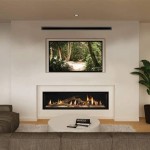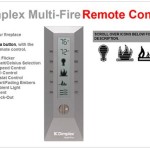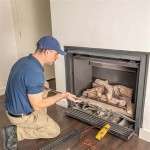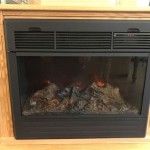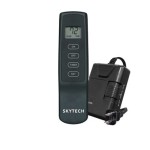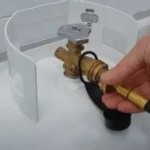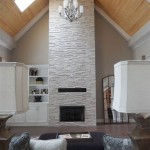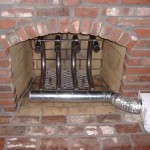Coal For Fireplace: A Comprehensive Guide
The use of coal in fireplaces has a long and rich history, dating back centuries. Even with the advent of more modern heating solutions, coal remains a viable and sometimes preferred option for certain users. This article will explore the various types of coal suitable for fireplaces, their advantages and disadvantages, proper burning techniques, safety considerations, and environmental impacts.
Understanding the nature of coal is paramount to appreciating its utility as a fuel source. Coal is a sedimentary rock formed from accumulated plant matter subjected to intense heat and pressure over geological timescales. This process, known as coalification, transforms the organic material into a carbon-rich substance capable of producing significant heat when burned. The degree of coalification determines the type of coal and its associated properties.
Types of Coal Suitable for Fireplaces
Not all types of coal are equally well-suited for use in a fireplace. Factors such as smoke production, heat output, and ease of ignition play crucial roles in determining suitability. The two primary types of coal often used in fireplaces are anthracite and bituminous coal.
Anthracite Coal: Anthracite, also known as hard coal, is the highest rank of coal. It boasts the highest carbon content and the lowest volatile matter content. This composition results in several key characteristics. Anthracite burns cleanly, producing minimal smoke and soot compared to other types of coal. Its high carbon content translates to a high heat output, making it an efficient heating source. However, anthracite is more difficult to ignite than bituminous coal and requires a sustained high heat source to establish a stable fire. It also commands a higher price due to its desirable qualities and relatively limited availability. The slow, steady burn of anthracite makes it ideal for maintaining a consistent temperature over an extended period.
Bituminous Coal: Bituminous coal, often referred to as soft coal, is a lower rank of coal than anthracite. It possesses a lower carbon content and a higher volatile matter content. This composition leads to different burning characteristics. Bituminous coal is significantly easier to ignite than anthracite, making it a more convenient option for starting a fire. However, its higher volatile matter content results in greater smoke and soot production during combustion. The heat output of bituminous coal is generally lower than that of anthracite, but it still provides a substantial amount of warmth. Bituminous coal is typically less expensive and more readily available than anthracite. Users must take precautions to manage the increased smoke production associated with bituminous coal, such as ensuring proper ventilation.
While these are the most common types, it's essential to note that sub-bituminous and lignite coals are generally not recommended for fireplace use. These lower-rank coals contain even higher moisture and volatile matter contents, leading to excessive smoke, poor heat output, and potential safety hazards. The use of inappropriate coal can also damage the fireplace and chimney system.
Advantages and Disadvantages of Using Coal in a Fireplace
The decision to use coal in a fireplace involves weighing its various advantages and disadvantages against individual needs and circumstances. Understanding these factors is crucial for making an informed choice.
Advantages: One of the primary advantages of coal is its high heat output per unit volume. This allows for a longer burn time and potentially lower fuel consumption compared to wood. Coal can also provide a more consistent and even heat distribution, particularly with anthracite. Furthermore, coal is generally more dense than wood, requiring less storage space for an equivalent amount of potential heat energy. In areas where wood is scarce or expensive, coal may offer a more economical heating solution. The slow-burning nature of coal means less frequent refueling, offering greater convenience for the user.
Disadvantages: The most significant disadvantage of coal is its environmental impact. The combustion of coal releases greenhouse gases, including carbon dioxide, which contribute to climate change. Additionally, coal can contain sulfur, which, when burned, produces sulfur dioxide, a pollutant contributing to acid rain. The handling and storage of coal can also be messy, as it produces black dust. The increased smoke and soot production associated with bituminous coal requires more frequent chimney cleaning and can pose respiratory health risks if ventilation is inadequate. Ignition can be more challenging compared to wood, and the initial investment in specialized equipment, such as a coal grate, may be necessary. Finally, proper disposal of coal ash is essential to prevent environmental contamination.
Proper Burning Techniques and Safety Considerations
Successfully and safely burning coal in a fireplace requires adherence to specific techniques and a thorough understanding of safety precautions. Improper burning can lead to inefficient heating, excessive smoke, and potentially dangerous situations.
Burning Techniques: A recommended practice is to start with a layer of kindling and small pieces of wood to establish a hot fire base. Once the wood is burning vigorously, add a layer of coal, starting with a small quantity and gradually increasing the amount as the fire establishes itself. Avoid smothering the fire by adding too much coal at once. Maintaining a good airflow is critical for efficient combustion. Ensure that the fireplace damper is fully open and consider using a grate that allows air to circulate beneath the coal. Periodically poke the coal bed to remove ash and clinkers that can impede airflow. For anthracite coal, a top-down burning method may be more effective, where the coal is placed on top of the kindling. Experimentation is often necessary to determine the optimal burning technique for specific fireplaces and coal types.
Safety Considerations: Carbon monoxide (CO) poisoning is a serious risk associated with burning any fuel, including coal. Ensure that a functioning carbon monoxide detector is installed in the home, ideally near sleeping areas. Never burn coal in an unvented fireplace or stove. Regularly inspect and clean the chimney to prevent creosote buildup, which can lead to chimney fires. When handling coal, wear gloves to protect the skin from irritation and wash hands thoroughly afterward. Store coal in a dry, well-ventilated area away from flammable materials. Properly dispose of coal ash in a metal container with a tight-fitting lid to prevent accidental fires. Supervise the fireplace when it is in use and never leave it unattended, especially with children or pets present. Familiarize oneself with local regulations regarding open burning and coal usage.
The selection of the appropriate coal grate is vital for efficient and safe burning. A grate designed specifically for coal provides adequate airflow beneath the fuel, promoting complete combustion. The grate should be sized appropriately for the fireplace to prevent overcrowding and ensure proper ventilation. Regular inspection and maintenance of the grate are essential to ensure its continued functionality and prevent damage.
The ventilation of the room and the fireplace is a critical safety aspect. Ensuring adequate airflow helps to dilute any potentially harmful gases and promotes efficient combustion. Opening a window slightly can improve ventilation. Regular chimney inspections and cleaning are necessary to prevent blockages that can impede airflow and increase the risk of carbon monoxide poisoning. A qualified chimney sweep can identify and address any potential problems, ensuring the safe operation of the fireplace.
Environmental Impact of Burning Coal
The environmental consequences associated with burning coal are a significant consideration in modern society. While coal offers certain advantages as a fuel source, its impact on air quality and climate change cannot be ignored.
The combustion of coal releases several pollutants into the atmosphere, including particulate matter, sulfur dioxide, nitrogen oxides, and mercury. These pollutants can contribute to respiratory problems, acid rain, and other environmental issues. The emission of greenhouse gases, particularly carbon dioxide, is a major concern due to its contribution to global warming. The extraction of coal can also have negative environmental impacts, such as habitat destruction, water pollution, and soil erosion. Mitigation strategies, such as using cleaner-burning coal types, installing emission control devices, and implementing carbon capture technologies, can help to reduce the environmental impact of coal combustion.
The increasing focus on sustainable energy sources has led to the development of alternatives to coal for heating. These alternatives include natural gas, propane, wood pellets, and renewable energy sources such as solar and geothermal. Each alternative has its own set of advantages and disadvantages in terms of cost, efficiency, and environmental impact. The selection of the most appropriate heating solution depends on individual circumstances and priorities. As technology advances and renewable energy sources become more affordable and accessible, their adoption is likely to increase, reducing reliance on fossil fuels like coal.
It is important to consider the overall lifecycle assessment of different heating fuels. This approach takes into account the environmental impact associated with each stage of the fuel's production, transportation, and combustion. By comparing the lifecycle assessments of different fuels, consumers can make more informed decisions about which option is the most environmentally responsible. The ongoing research and development of cleaner burning technologies and sustainable energy sources are crucial for mitigating the negative environmental impacts of heating and powering our homes.

Swept Away Chimney Sweep How To Light A Coal Fire

How To Light A Coal Fire 7 Steps Instructables

Valor 530icn Coal Fire Radiant Gas Fireplace And Insert Installed With Polished Windsor Arch In Mantel Antique Mantels

Can You Burn Wood In A Coal Fireplace

John Kane Coal Burning Fireplace

Proper Real Coal Fire In A Fireplace At My House Hd

Blazing Coal Fire Burning In Victorian Fireplace Stock Photo Adobe

Coal Fires All Night Burners Wood Multi Fuel Burning Fire Fireplace Warehouse

The Best Coal Effect Gas Electric Fires Direct Fireplaces
How To Burn Coal In A Fireplace Bituminous Heating General Coalpail Com Forum
Related Posts

